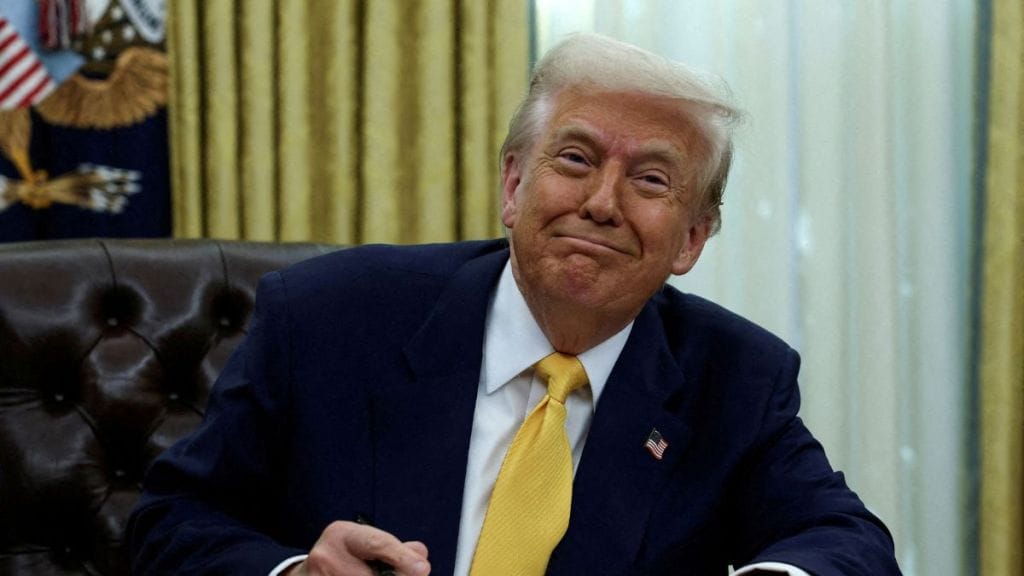With the Donald Trump-led US government pushing for reciprocal tariffs on Indian goods, citing unfair trade practices, an analysis report by Nomura stated that it could aid India’s electronics exports. India has been gradually bringing down import duties across segments over the past few years. In the Union Budget 2025-26, India rationalised import duties on several critical mobile phone components and parts used in manufacturing television panels. Nomura maintained that if India, in response to Trump’s tariff threat, decides to lower import duties to even zero, there will be limited scope of smartphone assembly shifting to the US. On the other hand, India could be at a comparative advantage and there could be a sustained ramp-up of smartphone exports from India. This, it added, will be contingent on whether tariffs are maintained over a period, as supply chain shifting takes time.
Per media reports, the Indian government is considering various strategies, including a bilateral trade deal with potential zero duties to address the threat from the US.
A look at the current landscape
Currently, imports of fully assembled mobile phones attract 15 per cent duty, while imports of wearables/hearables, televisions and air conditioners attract 20 per cent duty. This is compared to no import duty in the US. However, most subcomponents for PCBAs, cameras, and displays have 0 per cent import duty in India, IT hardware has 0 per cent duty, while components such as displays, PCBA, and mechanics are at 10 per cent duty. Given that imports are largely components and hardly any fully assembled products (except laptops), Nomura maintained that the weighted effective import duty rate is quite low at around 3-4 per cent for India.
Now in terms of trade, per data as collated by Nomura, while India’s exports of overall electronics products to the US have significantly increased over the past few years (~$2.5 billion in FY20 to ~$11 billion in FY24), almost around 50 per cent was contributed by smartphones (predominantly Apple). However, this is still only approximately 2 per cent of overall US electronics imports, with China and Mexico being much bigger trade partners, contributing 35 per cent and 22 per cent respectively of US Imports in 2023.
How can India electronics exports benefit?
It is worth noting that India has been gradually bringing down import taxes across segments over the past few years. “Under reciprocal tariffs, the US can apply the same tariffs on the same products or charge a weighted average tariff across a basket of commodities. The latter would perhaps make more sense, as the import and export baskets could be different. In that case, there would be no impact, as weighted average tariffs are already low,” Nomura said.
Alternatively, especially for mobile phones, if India decides to lower import duties to even zero, Nomura said, there will be a limited scope of smartphone assembly shifting to the US. This is given the low value-added nature of the product, significant disparity in labor costs, and the strengthening USD vs other currencies, making US manufacturing expensive.The average hourly wage in India is $1.5, vs ~$2.5 in Mexico and $15 in the US.
Now, India could be in a better position. For instance, in the case of smartphones, India contributes around 10 per cent of US imports, while reliance is significantly higher on China (>80 per cent). A similar scenario is visible in the case of IT hardware/telecom equipment as well, where China/Mexico are significant (>60 per cent share). “Hence, with ~20 per cent tariffs being implemented across the board for all products from China and Mexico (unlike in the past, when these categories were exempted), India’s competitiveness will increase, in our view, which could lead to a sustained ramp-up of smartphone exports from India,” Nomura said while adding that this will be contingent on whether tariffs are maintained over a period.
Key players capitalising on this
Interestingly, Some of the leading players in India have already started leveraging this opportunity. In FY25, Samsung and Apple are sourcing approximately 23 per cent and 15 per cent of their global production from India, respectively, while Motorola and Google have also started exporting meaningfully.
In conclusion, Nomura said, “India smartphone exports are likely to reach ~$20 billion in FY25F, and assuming a 30-35 per cent shift in global sourcing to India, it could touch ~$70 billion by FY30F. Within our coverage, we expect key beneficiaries will be Dixon (DIXON IN, Buy) (which is looking at strong traction in mobile exports from Motorola/Google) and SAMIL (MOTHERSO IN, Buy) (through mobile display components).”

